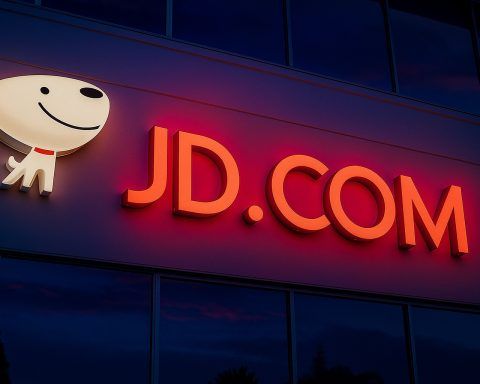- Q3 2025 Results: Chevron beat expectations with adjusted EPS of $1.85 (vs. $1.68 est.) on Oct 31 [1]. Revenue was ~$49.7B (slightly below consensus) [2]. CEO Mike Wirth hailed “record production, strong cash generation, and sustained superior cash returns to shareholders” in the quarter [3]. Upstream volumes hit a record ~4.1 million boe/day (up 21% YoY) after closing the $55B Hess deal [4] [5]. Downstream profit jumped ~91% on higher refining margins [6].
- Cash Flow & Returns: Chevron generated robust cash flow – about $9.4–9.9B from operations (≈20% YoY growth) [7], with free cash flow ~$4.9B. The board kept the quarterly dividend at $1.71 (annual $6.84) [8], a ~4.4% yield – among the highest in big oil [9] [10]. In Q3 the company returned $6.0B to shareholders (paying $3.4B in dividends and $2.6B in buybacks) [11]. CFO Eimear Bonner said Chevron has “high confidence” in continued free-cash-flow growth, citing gains from cost cuts and efficiency [12] [13].
- Analyst Sentiment: Wall Street is broadly bullish on CVX. About 70–80% of analysts rate Chevron a “Buy,” with a 1-year consensus target near $170–173 [14] [15] (implying ~10–15% upside). For example, UBS and Wells Fargo recently set targets around $190–197 [16] [17]. TradingView data agrees: the average 12-month target is ~$170 (range $124–197) [18]. An RBC Capital Markets note said the Q3 report was “strong,” highlighting momentum in Chevron’s base business and new barrels from Hess “all of which are contributing to cash generation” [19].
- Stock Price & Valuation: CVX has traded roughly flat this year (mid-$150s); as of late Oct it hovered around $153 [20]. Its forward P/E (~21) and market cap (~$315B) are in line with peers [21]. The generous dividend (~4.4–4.5% yield) cushions the stock – higher than Exxon (~3.5%) and Shell (~4%) [22] [23]. Chevron is a “dividend champion” with 38 consecutive years of hikes, recently raising the payout by ~5% [24].
- Oil Market Outlook: Macro headwinds loom. Both the IEA and U.S. EIA see continued oversupply. The EIA forecasts Brent around $62/bbl in Q4’25 and about $52 in 1H’26 [25], while IEA warns of a ~4 million barrel/day global surplus in 2026 [26]. If crude stays low, it could curb Chevron’s earnings despite higher volumes. (For context, benchmark Brent averaged ~$68 in Q3 [27].)
- Upcoming Catalysts: Chevron will host an Investor Day on Nov. 12 to update long-term guidance [28]. Key focuses include fully integrating the Hess assets (Guyana offshore reserves) and funding new growth projects. CEO Wirth has expressed confidence that Hess “will meet and exceed what we’ve committed” [29] and noted ramp-up of Gulf of Mexico output (targeting 300,000 bpd by 2026) [30]. Chevron is also selling non-core assets (e.g. a $2B DJ Basin pipeline sale [31]) and cutting ~20% of its workforce [32] to bolster margins. In the low-carbon realm, the company has pledged ~$10B for clean energy (e.g. carbon capture, hydrogen) by 2028 [33].
Strong Q3 Earnings and Record Production
Chevron’s Q3 (ended Sept. 30) report, released Oct. 31, exceeded forecasts despite lower oil prices. Adjusted EPS was $1.85, well above the ~$1.68 consensus [34] (it was $2.51 a year ago). Production from legacy Chevron + Hess hit a record 4.1M barrels-of-oil equivalent per day (vs. 3.4M a year prior) [35] [36]. Upstream profit fell (~28% YoY) due to weaker prices, but downstream (refining/chemicals) profit nearly doubled on strong margins [37]. Overall, Chevron generated ~$9.4–9.9B in operating cash flow (+20% YoY) [38] and about $4.9B free cash. The balance sheet remains strong (cash ~$7.7B, debt-to-cap ~18% [39]).
CEO Mike Wirth emphasized the positives: “Third quarter results reflect record production, strong cash generation, and sustained superior cash returns to shareholders,” he said [40]. He added that Hess integration is “progressing well” and unlocking synergies [41]. Chevron benefited from the Hess merger (closed July 2025): Hess’s 30% stake in Guyana’s Stabroek block and U.S. Permian output added ~0.5M boe/d, offsetting lower global oil prices [42] [43]. As a result, Goldman Sachs and others have praised the deal’s impact, and the company now expects up to $12.5B FCF for 2026 (raising prior guidance) [44] [45].
Robust Cash Flow & Shareholder Returns
Chevron’s cash flow power is a key narrative. Despite Q3 earnings being lower than a year ago, the company still turned strong cash. Free cash flow (~$4.9B) was slightly down from last year, but enough to fund a big shareholder payout. The board kept the quarterly dividend at $1.71 (annual $6.84) [46] – unchanged from Q2 – underscoring Chevron’s discipline. Notably, Chevron’s 4.4% yield is a rarity in the sector [47]. In Q3, Chevron returned $6.0B to investors: $3.4B in dividends and $2.6B in buybacks [48] (marking the 13th quarter in a row with >$5B total). Management says it will maintain this capital return cadence so long as oil-market fundamentals allow.
Cost control is another tailwind. Chevron is aggressively cutting expenses, targeting $2–3B in cost savings next year [49]. It plans ~$3B of cuts by 2026 and is divesting non-core assets (e.g. its Colorado pipelines) to focus on high-return projects [50] [51]. These efforts, combined with “increased capital efficiency,” give Chevron’s CFO “high confidence” in future free-cash-flow growth even if oil stays subdued [52] [53]. In short, analysts expect Chevron will continue generating strong cash that can fund dividends and buybacks.
Analyst & Valuation Outlook
Wall Street’s analysts generally like Chevron’s setup. A large majority rate CVX a buy or outperform. TechStock² reports that roughly 70–80% of analysts say “Buy”, with an average 12-month target around $170 [54]. Benzinga data likewise shows a consensus target near $173 [55] (implying ~8–9% upside from today’s price), with the high end as much as ~$201. UBS and Wells Fargo recently initiated coverage at $197 and $190 targets, respectively [56]. Even more cautious firms have fair-value mid-$160s (Raymond James ~$160) [57]. TradingView concurs, listing an average 1-year forecast of $169.99 (range $124–197) [58].
Analysts’ positive tone rests on Chevron’s cash flow and growth prospects. RBC Capital’s Biraj Borkhataria noted the Q3 beat highlights “continued momentum in [Chevron’s] base business, as well as growth coming through from the newly acquired barrels, all of which are contributing to cash generation” [59]. In other words, record output (Permian, Guyana, etc.) is helping offset weaker prices. Given the company’s clean balance sheet (debt/cap ~18%) and fat dividend, many see CVX as a relatively safe value play in energy.
Valuation is reasonable: at ~$153–155, Chevron trades around 20–21× forward earnings, and ~18× forward cash flow [60]. This is roughly in line with peers (Exxon ~21×), but Chevron’s yield is higher. Its 52-week range is about $132–169 [61], so at mid-range the stock is neither expensive nor overly cheap. The dividend history is a plus – Chevron has raised payouts 38 years running [62] – making the stock attractive to income investors.
Oil Market Outlook & Risks
The key wild card is oil price. Global oil supply has outpaced demand lately, pressuring prices. The IEA warned of a roughly 4 million barrel/day supply surplus in 2026 [63]. The U.S. EIA projects Brent crude will average only about $62/bbl in Q4 2025 and dip to roughly $52/bbl in early 2026 [64]. In Q3, Brent averaged about $68 [65] (down ~13% YoY). If prices fall as expected, upstream earnings at Chevron will shrink further. In fact, Chevron’s Q3 upstream profit was 28% below last year’s (even as volume rose) [66].
Oil market developments to watch: OPEC+ production levels and U.S. shale activity. Non-OPEC output has been rising (U.S. shale & Guyana) even as OPEC+ has eased cuts. Any renewed supply glut could cap Chevron’s profit growth. Conversely, any geopolitical supply shocks (e.g. Middle East tensions) or stronger demand could buoy oil and benefit Chevron. At press time, U.S. benchmark WTI is around $60–62/bbl and Brent ~$64 [67]. If prices stay soft, analysts warn Chevron’s share price may struggle – Motley Fool notes that without an oil-price recovery, CVX “looks like a sell” despite its strengths [68].
Strategic Moves & Catalysts
Longer term, Chevron is banking on new growth projects. The Hess merger (July 2025) gives Chevron a large stake in the giant Guyana oilfield (Stabroek block), along with deepwater Gulf projects in the U.S. CEO Wirth says the deal “will meet and exceed what we’ve committed” [69]. Guyana output (driven by projects coming online in 2025–26) could add hundreds of thousands of barrels/day in the coming years. In the Permian, Chevron is developing new wells and facilities that should boost U.S. production. In Q3, Permian barrels (~1.0M bpd) helped Chevron hit that record volume [70].
Chevron is also expanding its refining and chemicals footprint in high-growth markets. For example, last year it announced a major India refinery investment (noted by analysts, though not widely publicized). Conversely, it is divesting less-profitable assets (like its Colorado pipeline system [71]) to redeploy capital to high-return projects. Management has pledged to nearly triple R&D for low-carbon (investing in carbon capture, hydrogen, renewables) up to ~$10B by 2028 [72] – a nod to future energy trends even as oil/gas remains core.
Investor Watch: Chevron’s Nov. 12 Investor Day is the next big event. The company will likely update its medium-term guidance, possibly outlining new targets for output, costs and cash returns post-Hess. Investors will look for updated oil/Gas growth forecasts (Bonner expects U.S. Gulf output ~300k bpd by 2026 [73]) and plans for further cost cuts. Any upward revision to future free cash flow or production could spur the stock.
Bottom Line: Chevron enters Nov. 2025 as a cash-rich oil major with solid earnings momentum, thanks to cost cuts and a big new asset base (Hess). It has beaten Q3 estimates and analysts remain optimistic, but weakening oil prices are a major counterweight. The stock is trading near the mid-point of its range, backed by a fat dividend. As one analyst put it, Chevron’s strategy – higher efficiency, debt reduction and shareholder payouts – means the market “should take this [earnings beat] positively” [74]. Investors should weigh Chevron’s robust cash flow and yield against global oversupply risks in deciding whether CVX will take off this Monday and beyond [75] [76].
Sources: Recent analyses and news (Oct–Nov 2025) from Reuters [77] [78], TechStock² (ts2.tech) [79] [80], Wall Street reports [81] [82], and other industry commentary [83] [84]. All figures cited are from these sources.
References
1. www.reuters.com, 2. www.nasdaq.com, 3. www.washingtonexaminer.com, 4. ts2.tech, 5. www.washingtonexaminer.com, 6. www.reuters.com, 7. www.reuters.com, 8. www.nasdaq.com, 9. ts2.tech, 10. ts2.tech, 11. www.reuters.com, 12. ts2.tech, 13. www.reuters.com, 14. ts2.tech, 15. www.benzinga.com, 16. ts2.tech, 17. ts2.tech, 18. www.tradingview.com, 19. www.reuters.com, 20. ts2.tech, 21. ts2.tech, 22. ts2.tech, 23. ts2.tech, 24. ts2.tech, 25. www.washingtonexaminer.com, 26. ts2.tech, 27. www.reuters.com, 28. www.reuters.com, 29. www.reuters.com, 30. www.reuters.com, 31. ts2.tech, 32. ts2.tech, 33. ts2.tech, 34. www.reuters.com, 35. ts2.tech, 36. www.washingtonexaminer.com, 37. www.reuters.com, 38. www.reuters.com, 39. www.nasdaq.com, 40. www.washingtonexaminer.com, 41. www.washingtonexaminer.com, 42. www.reuters.com, 43. www.washingtonexaminer.com, 44. www.reuters.com, 45. www.reuters.com, 46. www.nasdaq.com, 47. ts2.tech, 48. www.reuters.com, 49. www.reuters.com, 50. ts2.tech, 51. ts2.tech, 52. ts2.tech, 53. www.reuters.com, 54. ts2.tech, 55. www.benzinga.com, 56. ts2.tech, 57. ts2.tech, 58. www.tradingview.com, 59. www.reuters.com, 60. ts2.tech, 61. www.google.com, 62. ts2.tech, 63. ts2.tech, 64. www.washingtonexaminer.com, 65. www.reuters.com, 66. www.reuters.com, 67. ts2.tech, 68. www.nasdaq.com, 69. www.reuters.com, 70. ts2.tech, 71. ts2.tech, 72. ts2.tech, 73. www.reuters.com, 74. www.reuters.com, 75. www.reuters.com, 76. www.washingtonexaminer.com, 77. www.reuters.com, 78. www.reuters.com, 79. ts2.tech, 80. ts2.tech, 81. www.reuters.com, 82. www.benzinga.com, 83. www.washingtonexaminer.com, 84. www.nasdaq.com





